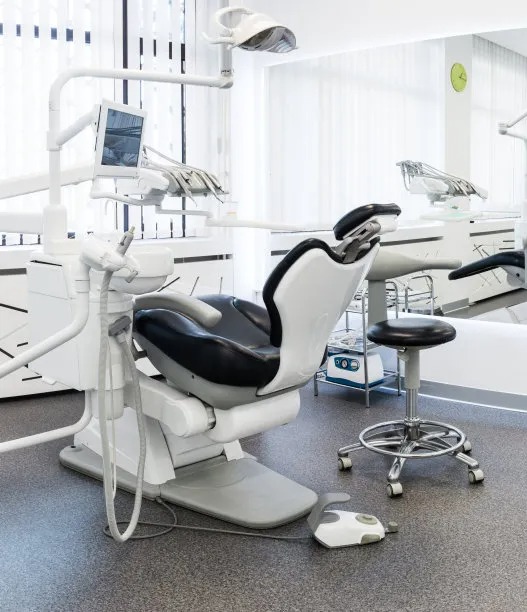The Process and Considerations of Extracting a Tooth for Dental Health Improvement and Patient Comfort
Summary: Tooth extraction can be a vital procedure for dental health improvement and enhancing patient comfort. This article addresses the comprehensive process involved in extracting a tooth, detailing considerations for choosing the right candidates, the importance of patient comfort, the methods employed for extraction, and post-extraction care to ensure optimal recovery. By providing a thorough understanding of each aspect, this piece aims to equip both dental practitioners and patients with valuable insights into the extraction process, highlighting the significance of prioritizing both health and comfort during such interventions.
1. Understanding the Indications for Tooth Extraction

Tooth extraction is often considered when a tooth is severely decayed, infected, or presents other complications that jeopardize oral health. It serves as a necessary intervention to prevent further issues such as abscesses or the spread of infection. Dentists thoroughly evaluate a patient’s dental history, symptoms, and overall health before recommending extraction.
Another critical indication for extraction is overcrowding in the mouth, which can harm teeth alignment and bite function. Removing specific teeth, particularly in orthodontic cases, can pave the way for a healthier and well-aligned set of teeth. Understanding these indications helps both dentists and patients make informed decisions regarding necessary dental procedures.
In cases of periodontal disease, where the supporting structures of teeth become compromised, extraction might also be warranted. This approach can help to alleviate pain and discomfort while preventing further deterioration of oral health. Overall, recognizing the need for extraction is the first step in realizing its benefits for dental improvement.
2. Ensuring Patient Comfort During Extraction
Prioritizing patient comfort is crucial during any dental procedure, especially tooth extractions. Before the extraction, patients are often given a thorough explanation of the process, including what to expect during and after the procedure. This transparency can alleviate anxiety and build trust between the patient and the dentist. Good communication plays a vital role in enhancing the overall experience.
Furthermore, the use of local anesthesia is standard practice during tooth extractions to block pain sensation in the affected area. The level of sedation can vary based on the patient’s preferences and the complexity of the extraction. Options range from nitrous oxide to intravenous sedation, each tailored to ensure the patient feels at ease throughout the procedure.
Post-operative care is equally vital for patient comfort. Dentists provide detailed instructions on managing discomfort, including the use of pain relief medications and maintaining a soft diet. Ensuring a comfortable recovery experience promotes effective healing and minimizes the likelihood of complications.
3. The Techniques Used in Tooth Extraction
The techniques employed in tooth extraction vary depending on the tooths position and the complexity of the case. Simple extractions are performed using forceps under local anesthesia, suitable for visible teeth that are intact and easy to access. The dentist gently rocks the tooth back and forth to loosen it before extraction.
On the other hand, surgical extractions are necessary for teeth that are broken, impacted, or beneath the gum line. In these cases, a small incision in the gum tissue may be needed to access the tooth. Proper surgical techniques should be employed to minimize trauma to surrounding tissues and ensure a smooth extraction process.
Regardless of the extraction type, maintaining sterile conditions is crucial to prevent infection. Dentists often use sterile instruments and follow stringent infection control protocols to ensure a safe and effective procedure. Understanding the techniques allows for better patient education and preparedness.
4. Post-Extraction Care for Optimal Recovery
Post-extraction care is key to facilitating proper recovery after tooth removal. Following the procedure, patients are generally advised to bite down on gauze to help control bleeding. It’s critical to follow the dentists postoperative instructions concerning dietary restrictions and activity levels during the healing period.
Patients should avoid strenuous activities and stick to soft foods while allowing the extraction site to heal. Keeping the area clean is essential, and dentists typically recommend gentle rinsing with saltwater to prevent infection and promote healing. It’s important to monitor any signs of complications, such as excessive pain or swelling, and to reach out to the dentist if these occur.
Additionally, follow-up appointments may be necessary to ensure proper healing and to discuss any further dental needs. Such diligence in post-extraction care emphasizes the importance of patient well-being and proactive management of dental health.
Summary:
The entire process of tooth extraction comprises several vital aspects, from understanding when it is necessary to ensuring patient comfort and executing proper techniques to facilitating optimal recovery. Each step plays a significant role in not just improving dental health but also in fostering a supportive environment for patients. By comprehending all this, individuals can better navigate their dental journeys.
This article is compiled by Vickong Dental and the content is for reference only.



